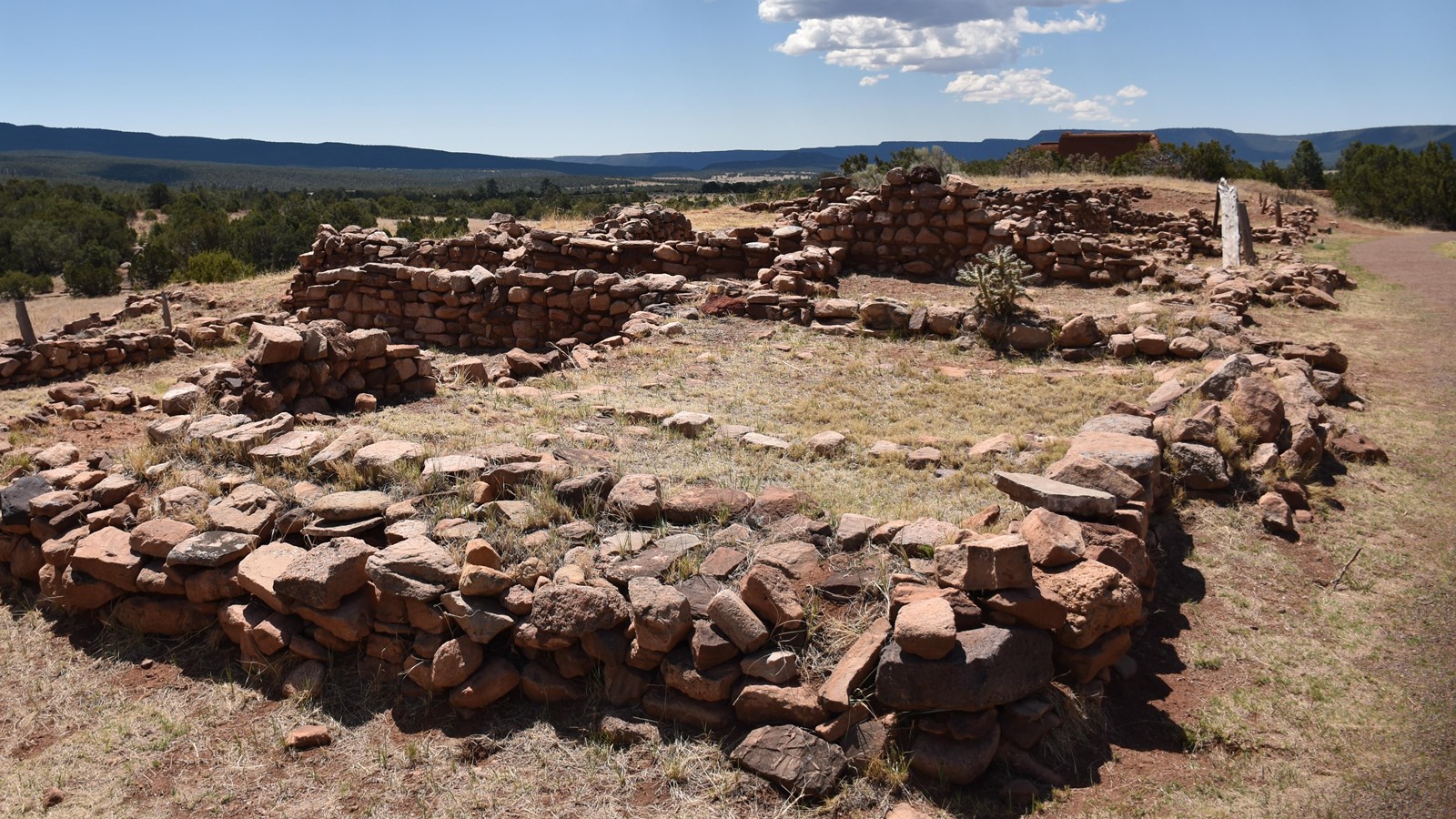Last updated: March 18, 2025
Place
The Pecos Pueblo

NPS Image
Quick Facts
Amenities
5 listed
Benches/Seating, Picnic Table, Restroom - Accessible, Toilet - Flush, Trash/Litter Receptacles
Built near water, with access to food, and along trade routes, Pecos Pueblo thrived from around 1350 C.E. until 1838 C.E. Archaeologists believe the pueblo site, comprising a north and a south pueblo unit, had around 1000 rooms and at its height was home to about 2000 individuals. Spanish records describe Pecos as a bustling community that hosted trade fairs drawing people and goods from the Plains Nations and the Rio Grande Pueblos. Archaeological finds of shells from the Pacific Coast and Gulf of Mexico and flint arrowheads from sources now in Texas give us an idea as to how far these trade routes ran.
In 1540 C.E., the Coronado expedition encountered Pecos Pueblo and described the community as having 500 warriors who could subdue other people at will. In the 1620s, Franciscans oversaw the Pueblo construction of a Mission Church close to the south pueblo. In 1680 C.E., Pecos was one of the nearly thirty pueblos that revolted and pushed the Spanish influence from the area. The Spanish returned to, and reconquered New Mexico in 1692.
Over a number of years, due to disease, decreasing trade, increasing attacks from the neighboring Comanche, and the theft of land, the population of Pecos Pueblo decreased. In 1838 C.E., the last inhabitants left Pecos to join the Pueblo of Jemez. We ask that you visit respectfully and that you leave things as you see them.
In 1540 C.E., the Coronado expedition encountered Pecos Pueblo and described the community as having 500 warriors who could subdue other people at will. In the 1620s, Franciscans oversaw the Pueblo construction of a Mission Church close to the south pueblo. In 1680 C.E., Pecos was one of the nearly thirty pueblos that revolted and pushed the Spanish influence from the area. The Spanish returned to, and reconquered New Mexico in 1692.
Over a number of years, due to disease, decreasing trade, increasing attacks from the neighboring Comanche, and the theft of land, the population of Pecos Pueblo decreased. In 1838 C.E., the last inhabitants left Pecos to join the Pueblo of Jemez. We ask that you visit respectfully and that you leave things as you see them.
